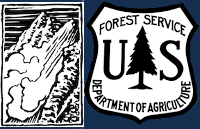Snowpack and Avalanche Discussion
<p>Strong winds are blasting the mountains around Bozeman, Big Sky and West Yellowstone, drifting snow onto weak layers buried 6-18” deep and making human-triggered avalanches possible. The Big Sky and Taylor Fork areas received 2” of new snow last night providing a little more ammunition for the wind. Yesterday, Doug got blasted by blowing snow in his <a href="https://www.youtube.com/watch?v=Yaw6TM1HXIE"><strong>video</strong></a&…; discussing instabilities related to wind-loading in the northern Bridger Range. Way to go the extra mile, Doug.</p>
<p>Yesterday, a group turned back from snowboarding a steep line in Hyalite Canyon when they found hard wind slabs covering their objective. Sunday, skiers near Flanders Mountain reported shooting cracks and thin wind slabs (<a href="https://www.mtavalanche.com/node/26024"><strong>photos and details</strong></a>). Saturday, four separate groups triggered avalanches breaking 8-18” deep and up to several hundred feet wide in the Bridger Range (<a href="https://www.mtavalanche.com/node/25992"><strong>northern Bridgers avalanches 1</strong></a>, <a href="https://www.mtavalanche.com/node/25997"><strong>2</strong></a>, <a href="https://www.mtavalanche.com/node/25989"><strong>3</strong></a>, <a href="https://www.mtavalanche.com/node/26026"><strong>Mount Baldy avalanche</strong></a>). Similar conditions exist in the mountains from Bozeman through West Yellowstone.</p>
<p>On non-wind-loaded slopes, you will find generally stable conditions but slopes unaffected by the wind are getting harder to find (<a href="https://www.youtube.com/watch?v=nHauGuzZ7pk&list=PLXu5151nmAvT1nrM2…;
<p>Finally, with high temperatures in the mid 40s F and the possibility of light rain at lower elevations, watch for increased moisture in the upper snowpack and isolated wet snow avalanches.</p>
<p>The danger is MODERATE. Avoid slopes with signs of recently wind-drifted snow and instabilities like cracking or collapsing and test the snowpack before considering steep terrain.</p>
<p>Skiers and riders triggered at least five avalanches breaking 12-24” deep last weekend in the mountains around Cooke City (<a href="https://www.mtavalanche.com/avalanche-activity"><strong>avalanche activity list</strong></a>). Additionally, Alex was climbing Scotch Bonnet on Sunday, when he heard a loud “whumph” that communicated the message of unstable snow to him and his partner (<a href="https://www.youtube.com/watch?v=SxPaEcKATts&list=PLXu5151nmAvT1nrM2…;). The two inches of new snow will not significantly change stability. But winds are gusting to 40 mph from the southwest are drifting snow and exacerbating the existing instabilities related to persistent weak layers in the top two feet deep in the snowpack.</p>
<p>While smaller slides related to wind-drifting are the most likely problem today, dangerous avalanches like the last week’s slide on Mount Abundance and the recent fatal avalanche near Miller Mountain remain possible (<a href="https://www.youtube.com/watch?v=qC7geA4kgyg&list=PLXu5151nmAvT1nrM2… Mountain fatality video</strong></a>, <a href="https://www.youtube.com/watch?v=LHkbEAf1rlM&list=PLXu5151nmAvT1nrM2…. Abundance video</strong></a>, <a href="https://www.mtavalanche.com/node/25941"><strong>details</strong></a>). Turn back if you notice any signs of instability and dig down to test weak layers buried a couple of feet deep.</p>
<p>Today, the danger will be most acute on slopes with recent or ongoing wind-loading. The danger is MODERATE.</p>
<p>If you get out, please send us your observations no matter how brief. You can submit them via our <a href="https://www.mtavalanche.com/node/add/snow_observation"><strong>website<…;, email (<a href="mailto:mtavalanche@gmail.com"><strong>mtavalanche@gmail.com</strong></a…;), phone (406-587-6984), or Instagram (#gnfacobs).</p>
